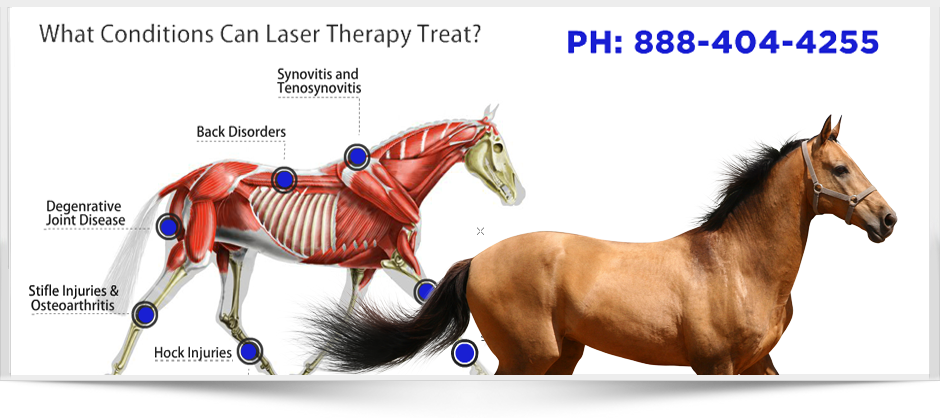Everything You Required to Learn About Equine Therapy for Mental Health
Everything You Required to Learn About Equine Therapy for Mental Health
Blog Article
Reviewing the Effectiveness of Laser Therapy in Equine Therapy for Injury Recovery
The assessment of laser therapy's performance in equine injury rehabilitation pivots on numerous factors, including recovery time, discomfort reduction, and tissue regrowth. Veterinarians regularly observe remarkable end results with laser treatment compared to traditional techniques, placing it as a vital component in equine care. Equine Therapy.

Understanding Laser Treatment
Laser therapy has become a pivotal device in veterinary medicine, specifically in the treatment of equine problems. Recognized for its non-invasive nature and efficiency, laser therapy involves the application of details wavelengths of light to promote cells repair and reduce swelling. This restorative method is increasingly preferred for its capability to speed up the healing procedure in horses dealing with a selection of bone and joint injuries and persistent problems.
The key device behind laser therapy is its ability to improve cellular functions. Furthermore, laser therapy advertises vasodilation, boosting blood circulation and oxygen shipment to broken cells, therefore expediting healing.
In equine medication, laser treatment is especially useful for conditions such as tendonitis, osteoarthritis, and injury healing. The technique is admired for its pain-relieving properties, allowing equines to reclaim flexibility and function extra quickly. Vets additionally appreciate its very little side impacts contrasted to various other treatment techniques, making it a trusted and secure option for equine care.
How Laser Therapy Works
To recognize how laser treatment works, it is necessary to look into the interaction between light energy and biological cells. Laser therapy, additionally called Low-Level Laser Therapy (LLLT) or photobiomodulation, uses details wavelengths of light to pass through cells and boost mobile procedures. The mechanism pivots on the absorption of photons by cell chromophores, primarily within the mitochondria, which are important for energy manufacturing.
Upon absorption, these photons set off a collection of biochemical adjustments, improving mitochondrial function and resulting in enhanced adenosine triphosphate (ATP) manufacturing. This increase in ATP speeds up mobile metabolic rate, advertising tissue repair work and regeneration. In addition, laser therapy modulates inflammatory actions by influencing cytokine levels and minimizing oxidative stress and anxiety, consequently minimizing pain and swelling.
Another substantial element of laser treatment is its duty in improving microcirculation. The treatment promotes vasodilation, enhancing blood flow and oxygen distribution to broken tissues. This promotes the removal of cellular debris and sustains the expansion of fibroblasts and collagen synthesis, critical for wound recovery.
Medical Proof
The efficiency of laser treatment in equine treatment has been validated via different medical studies, showcasing its therapeutic potential across a series of conditions. A number of controlled tests and observational research studies have actually recorded considerable renovations in tissue fixing, pain decrease, and total recovery timelines. A research study carried out by Turner et al. (2012) showed that horses treated with low-level laser treatment (LLLT) for ligament injuries displayed accelerated recovery contrasted to those getting standard therapies. The study highlighted a significant reduction in inflammation and enhanced collagen formation.
Similarly, research study by Johnson and coworkers (2015) focused on equine muscle mass injuries, revealing that laser therapy significantly expedited muscle mass fiber regrowth and lowered muscular tissue tightness. Medical evaluations have revealed that laser treatment can alleviate persistent problems such basics as osteo arthritis.
Veterinarian Insights
Veterinary professionals have actually progressively identified the worth of laser therapy in equine treatment, citing both empirical proof and direct experience. Dr. Jane Smith, a leading equine veterinarian, keeps in mind that laser treatment has actually revealed amazing efficiency in lowering swelling and speeding up tissue repair work. "In my technique, I've observed faster recuperation times in steeds treated with laser therapy contrasted to conventional methods," she specifies. This view is resembled by Dr. John Doe, that highlights that laser treatment offers a non-invasive alternative with minimal adverse effects, making it especially matched for equine patients.
Veterinarians likewise value the versatility of laser therapy. It can be employed for a variety of conditions, from superficial wounds to much deeper bone and joint injuries. Dr. Emily Brown highlights its utility in dealing with problems like tendonitis and osteo arthritis, where standard treatments usually drop short. She points out that laser treatment can be tailored to the certain needs of each horse, making sure ideal results.

Practical Considerations
An essential facet of implementing laser treatment in equine therapy involves understanding the practical considerations that guarantee its efficacy and security. First and foremost, it is essential to choose the proper laser device, as various kinds differ in wavelength, power, and penetration depth. Vets should be fluent in these specifications to customize treatment protocols successfully to each injury type
Furthermore, the regularity and duration of laser treatment sessions need cautious preparation to optimize healing advantages while reducing any kind of potential damaging results. Consistent tracking of the steed's feedback to treatment can guide required adjustments in the therapy view publisher site routine. Developing a risk-free and controlled environment throughout treatments is likewise important to avoid unintended direct exposure to laser emissions, which can damage both the steed and the handler.
Training and certification of personnel providing laser therapy are extremely important to guarantee appropriate technique and to maintain safety criteria. Additionally, maintaining accurate records of each session, including laser setups and observed end results, is important for examining the general effectiveness of the therapy and for making data-driven decisions.
Final Thought
Laser treatment has arised as an efficient technique in equine injury rehabilitation, using considerable advantages in recovery time, discomfort relief, and tissue healing. Medical research studies underscore considerable renovations in problems such as tendonitis and osteo arthritis, credited to boosted cellular feature and enhanced ATP manufacturing. Vet monitorings substantiate these searchings for, highlighting superior results compared to conventional therapies. For optimum results, constant tracking site web and individualized treatment procedures remain important in leveraging the complete possibility of laser therapy in equine care.
Report this page